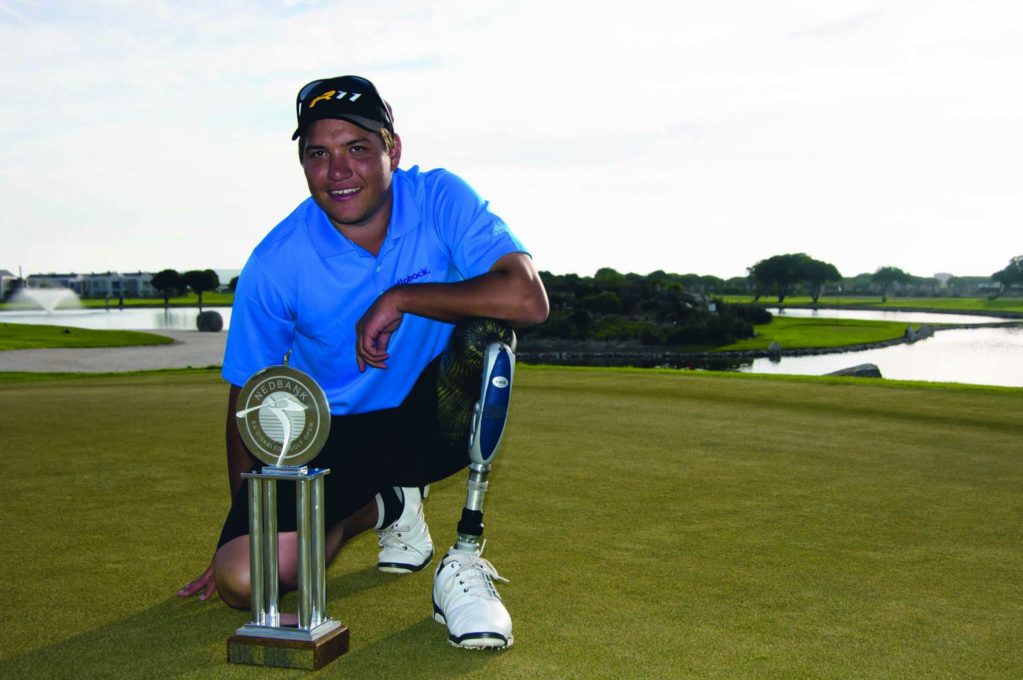We all know the one they call the Blade Runner or 400m-sensation Oscar Pistorius. He’s transformed the Paralympics into a global showpiece. Now, a new generation of disabled people dreams of competing at the Paralympics.
Golf has been included in the Olympic Games for 2016. Disabled golfers have set their sights on Paralympic inclusion in Rio in the same year. There’s just one problem—there’s no international disabled golfing body. The South African Disabled Golf Association (SAGDA) is fighting to get this code included on the world stage.
And SAGDA has one very powerful asset. His name is Daniel Slabbert.

He wanted to be a professional golfer—he was young and talented. But when he was 14, a playful afternoon jumping on a trampoline ended in devastation. He caught the trampoline off balance and severed the tendons and major arteries in his left leg above the knee. His leg was amputated.
Loading...
The accident would have left many an individual pondering a bleak future, but Slabbert—he was back swinging a golf club in little over 12 weeks—recalls the brief transition from recovery to playing again.
“Three months later, I came home with a prosthetic. Not long after that, I dusted off my clubs. It was a pretty slow process, but soon I was hitting it as well as ever. Being able to pick up a club and play competitive golf again not only saved my sanity, it gave me purpose,” says Slabbert.
Well, the purpose Slabbert speaks of has gained much greater significance. Last year, he won his maiden Nedbank SA Disabled Open by two strokes. This year, he defended his title; this time, by a whopping 17 shots. The victory is significant, but the margin of his win is even more important. In Slabbert, South Africa possesses a potential world champion.
The head of SAGDA, Eugene Vorster, echoes this sentiment.
“I’m talking to him [Slabbert] regularly and the guys at the high performance program at Tuks [University of Pretoria] are saying he’s showing great promise on an amateur level to reach the highest level, which in South Africa is quite tough.”
Vorster explains how Slabbert’s new prosthetic has made a huge difference to his game, but ultimately his attitude will determine his success.
“With technology, with a better leg, it will help. What is exciting about Daniel is that his heart is in the right place and so is his head.”
One of the major barriers, says Vorster, to getting disabled golf to the Paralympics is money.
“Especially for us, as South Africans, for us to become international players is going to be a long journey. Compare our costs with players overseas—it costs our guys a lot more. There are a few challenges, but as is the case with able-bodied golfers, disabled South African golfers are close to the best in the world.”
One of the first showcase events for SAGDA will come at the R2 million ISPS HANDA South African Match Play Championship at Zwartkop Country Club in October. Disabled golfers and able-bodied professionals will play at the same event.
The point of such an event, says Midori Miyazaki, the executive director of international affairs for ISPS, is exposure.
“Paralympics is a big, big mission. To get golf in there is a long way to go, but I think one of the things we can do is to let people know that golf can be played by the disabled and actually change their lives. The exposure through the Sunshine Tour, through the professional golfers, their backing, it helps a huge amount,” says Miyazaki.
Vorster says the tournament will act as a stepping stone.
“We’re aiming first at getting that lucrative international professional tour and then Paralympic inclusion. Wouldn’t it be great, like the wheelchair basketball players, to have an international professional tour.”
Loading...
